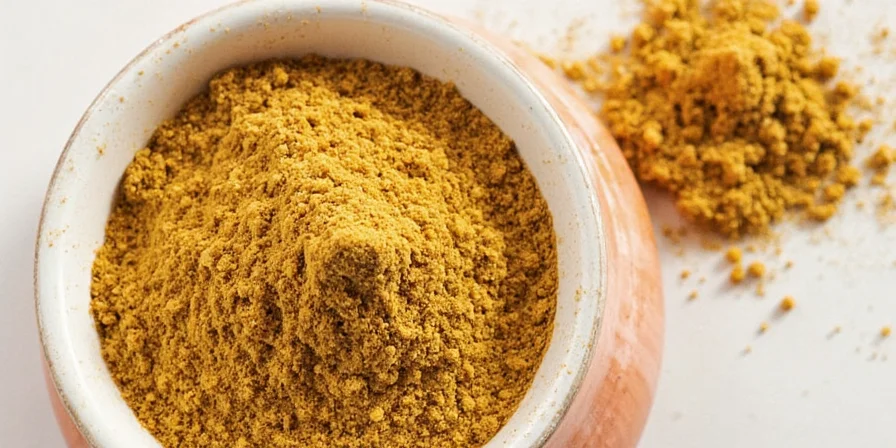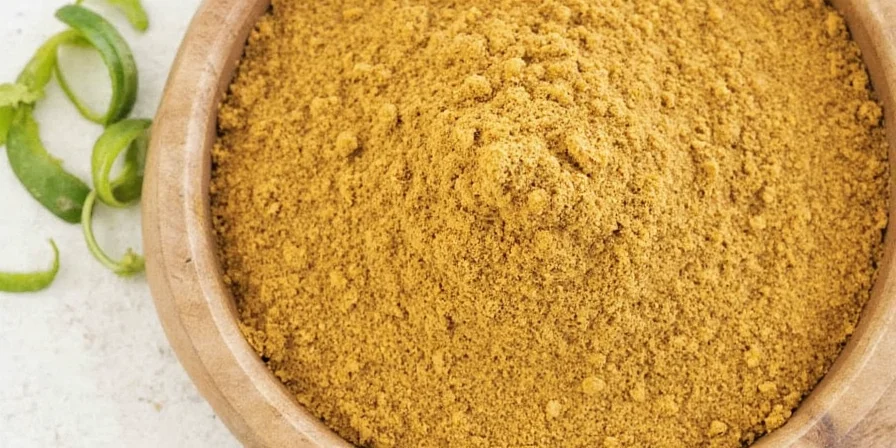Mojo powder isn't just another spice blend—it's your secret weapon for authentic Caribbean and Canarian flavors. If you're searching for what mojo powder is, how to use it properly, and whether you should buy or make your own, you've found the definitive guide. Forget confusing descriptions and incomplete recipes—here's exactly what you need to know to master this versatile seasoning in your kitchen.
Table of Contents
- What Exactly Is Mojo Powder? (Simple Definition)
- True Origins: Canary Islands vs Cuban Mojo Powder
- Core Ingredients Breakdown: What Makes Real Mojo Powder
- Perfect Homemade Mojo Powder Recipe (With Measurements)
- 5 Proven Ways to Use Mojo Powder: Beyond Basic Sprinkling
- How Long Does Mojo Powder Last? Proper Storage Guide
- Mojo Powder vs Adobo: Key Differences Explained
- FAQ: Answering Your Top Mojo Powder Questions
What Exactly Is Mojo Powder? (Simple Definition)
Mojo powder is a dehydrated version of traditional Canarian mojo sauce, transformed into a shelf-stable spice blend. Unlike liquid mojo which requires fresh ingredients, the powdered version maintains the essential flavor profile—garlicky, citrusy, and slightly smoky—while offering convenience for everyday cooking. The critical difference between authentic and generic "mojo" blends lies in the citrus component: real mojo powder contains dehydrated citrus (usually bitter orange or lemon), not just citrus flavoring.

True Origins: Canary Islands vs Cuban Mojo Powder
Despite common belief, mojo powder originated in the Canary Islands, not Cuba. Traditional Canarian mojo rojo (red sauce) was made with fresh garlic, olive oil, vinegar, paprika, and local mojo peppers. When Canary Islanders migrated to Cuba in the 19th century, they adapted the recipe using available ingredients like bitter oranges.
The powdered version emerged as a practical solution for long sea voyages and shelf stability. Key historical fact: authentic Canarian mojo uses pimentón de la Vera (smoked paprika from Spain), not standard paprika. This distinction separates authentic blends from imitations.
| Regional Variation | Authentic Ingredients | Common Imitations |
|---|---|---|
| Canary Islands Mojo | Garlic, pimentón de la Vera, bitter orange, cumin | Regular paprika, lemon juice, no cumin |
| Cuban Mojo | Garlic, bitter orange, cumin, oregano | Lemon juice, no bitter orange, added salt |
| Puerto Rican Mojo | Garlic, sour orange, cilantro, vinegar | Lime juice, no cilantro, paprika |
Core Ingredients Breakdown: What Makes Real Mojo Powder
Authentic mojo powder contains precisely balanced proportions of these five essential components:
- Garlic powder (not granulated) - Provides savory depth without burning
- Smoked Spanish paprika (pimentón de la Vera) - Delivers smokiness without heat
- Dehydrated bitter orange (not lemon) - Creates authentic citrus note
- Ground cumin - Adds earthy warmth (often missing in commercial blends)
- Sea salt - Balances flavors (added separately in premium blends)
Warning: Many commercial "mojo" products substitute lemon powder for bitter orange and omit cumin—this creates a completely different flavor profile that won't deliver authentic results in traditional recipes.
Perfect Homemade Mojo Powder Recipe (With Measurements)
This tested recipe yields authentic Canarian-style mojo powder. Makes ¼ cup (enough for 4-6 applications).
| Ingredient | Exact Measurement | Why It Matters |
|---|---|---|
| Smoked Spanish paprika | 2 tablespoons | Must be pimentón de la Vera for authentic smokiness |
| Garlic powder | 1½ tablespoons | Freshness is critical—stale garlic ruins the blend |
| Bitter orange powder | 1 tablespoon | Substitute: 1 tsp lemon zest + 2 tsp dried orange peel |
| Ground cumin | 1½ teaspoons | Toast whole seeds first for maximum flavor |
| Sea salt | 1 teaspoon | Add separately to control sodium levels |
Step-by-Step Instructions:
- Toast cumin seeds: In dry skillet over medium heat, toast 2 tsp cumin seeds 2-3 minutes until fragrant. Grind to fine powder.
- Combine ingredients: In glass bowl, mix all ingredients thoroughly. Glass prevents flavor absorption.
- Rest the blend: Cover and let sit 24 hours before use—this allows flavors to meld properly.
- Store properly: Transfer to airtight glass container away from light. Keeps 6 months.

5 Proven Ways to Use Mojo Powder: Beyond Basic Sprinkling
Don't waste your mojo powder on bland applications. These professional techniques deliver authentic results:
- Mojo-Infused Olive Oil (Essential Technique): Mix 1 tsp mojo powder with 2 tbsp extra virgin olive oil. Let sit 30 minutes. Use as finishing oil for meats or vegetables—never cook with this mixture as heat destroys delicate citrus notes.
- Authentic Cuban Mojo Marinade: Combine 2 tbsp mojo powder, ¼ cup bitter orange juice (or 2 tbsp lemon juice + 2 tbsp water), 2 minced garlic cloves, and ½ cup olive oil. Marinate chicken 4-12 hours. The powder dissolves into a perfect replica of traditional liquid mojo.
- Papas Arrugadas Method: Toss 1½ lbs small potatoes with 1 tbsp mojo powder and 2 tbsp water. Roast at 400°F until wrinkled (25-30 min). The powder creates authentic Canarian wrinkled potatoes without messy liquid sauces.
- Mojo-Roasted Vegetables: For every pound of vegetables, mix 1½ tsp mojo powder with 1 tbsp vinegar (not lemon juice). The acid activates the citrus powder for brighter flavor.
- Mojo Butter for Finishing: Blend 2 tbsp softened butter with 1 tsp mojo powder. Chill, then slice onto grilled fish or steak just before serving.

How Long Does Mojo Powder Last? Proper Storage Guide
Mojo powder's shelf life depends entirely on storage conditions:
- Opened container: 3-4 months at room temperature (in dark cupboard)
- Unopened container: 6-8 months (check production date)
- Refrigerated: 8-10 months (best for humid climates)
- Freezer: 12+ months (only if vacuum-sealed)
Test for freshness: Rub a pinch between fingers. If citrus aroma is weak or paprika smell dominates, it's past prime. Discard if you detect mustiness—this indicates moisture absorption.
Mojo Powder vs Adobo: Key Differences Explained
Confusing these blends leads to cooking disasters. Here's how they differ:
| Characteristic | Mojo Powder | Adobo Seasoning |
|---|---|---|
| Origin | Canary Islands | Puerto Rico |
| Citrus Component | Bitter orange (essential) | Lemon/lime (optional) |
| Smokiness | From smoked paprika | None (unless specified) |
| Core Spices | Garlic, cumin, paprika | Garlic, oregano, black pepper |
| Best For | Chicken, fish, potatoes | Pork, beans, rice dishes |
| Substitution Ratio | Use 1:1 for liquid mojo | Use ¾ amount of adobo |
Key insight: Mojo powder requires acid activation (vinegar or citrus juice) to reach full flavor potential, while adobo works straight from the container. Never substitute one for the other in traditional recipes.
FAQ: Answering Your Top Mojo Powder Questions
Q: Is store-bought mojo powder authentic?
A: Rarely. Most commercial blends (like Badia or Goya) use lemon powder instead of bitter orange and omit cumin. Check labels for "bitter orange" or "naranja agria"—if absent, it's not authentic Canarian-style mojo.
Q: Can I make mojo powder without bitter orange?
A: For true authenticity, no. But in a pinch: combine 1 tsp dried lemon zest + 2 tsp dried orange peel + ¼ tsp ground coriander to approximate the complex citrus profile.
Q: Why does my mojo powder taste bitter?
A: Two common causes: 1) Using regular paprika instead of smoked Spanish paprika, or 2) Letting the powder sit too long after mixing with liquid. Always use within 2 hours of adding moisture.
Q: How is mojo powder different from sazón?
A: Sazón contains annatto (for color) and no citrus, while authentic mojo must have citrus. Sazón works for rice dishes; mojo shines with meats and potatoes.

Mojo powder transforms ordinary dishes into authentic Caribbean and Canarian specialties when used correctly. The critical factors for success are using the right ingredients (especially bitter orange), proper activation with acid, and avoiding common substitution mistakes. Keep your blend fresh, store it properly, and use it within its prime window for maximum flavor impact. Whether you're making classic papas arrugadas or elevating weeknight chicken, understanding these nuances makes all the difference between authentic results and disappointing imitations.












 浙公网安备
33010002000092号
浙公网安备
33010002000092号 浙B2-20120091-4
浙B2-20120091-4